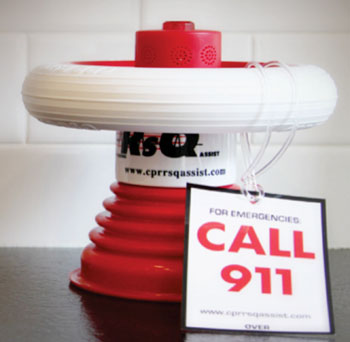CPR Device Improves Outcomes While Reducing Fatigue
By HospiMedica International staff writers
Posted on 18 Jun 2014
A novel hands-only chest compression device eliminates the intimidation factor inherent in performing cardiopulmonary resuscitation (CPR).Posted on 18 Jun 2014
The CPR RsQ Assist device guides the CPR administrator with easy-to-follow voice commands, along with an audio and visual metronome, to deliver quality compressions in the center of the chest, even over minimal clothing. The device guides the user through the various stages of CPR, such as calling 911, placing the device in the center of the victim's chest, and instructions for chest compressions 100 times per minute. As a result, operator fatigue is reduced by 90%, and performance results are increased by 94.5%, when compared to traditional CPR.

Image: The CPR RsQ Assist device (Photo courtesy of CPR RsQ Assist).
To address fatigue, the product was designed an ergonomic, easy-to-grip, non-slip handle that allows leverage of the upper body strength and weight while pushing down. The CPR RsQ Assist is available on its own or with a custom-designed wall cabinet and signage for easy placement adjacent to an automated external defibrillator (AED) machine, so that rescuers have easy access to both lifesaving devices. The CPR RsQ Assist device is a product of CPR RsQ Assist (Round Rock, TX, USA), and has been approved by the US Food and Drug Administration (FDA).
“This product complements the science behind hands-only CPR, and makes it easier to provide early, quality bystander CPR,” said Joe Hanson, inventor of CPR RsQ Assist. “It's an essential safety device just like a fire extinguisher or smoke detector, which we hope will help save more lives following sudden cardiac arrest.”
The 2010 American Heart Association (AHA) guidelines for hands-only CPR call for at least 100 chest compressions per minute for at least two minutes, at a depth of at least two inches in the center of the victim's chest prior to using an AED machine.
Related Links:
CPR RsQ Assist














